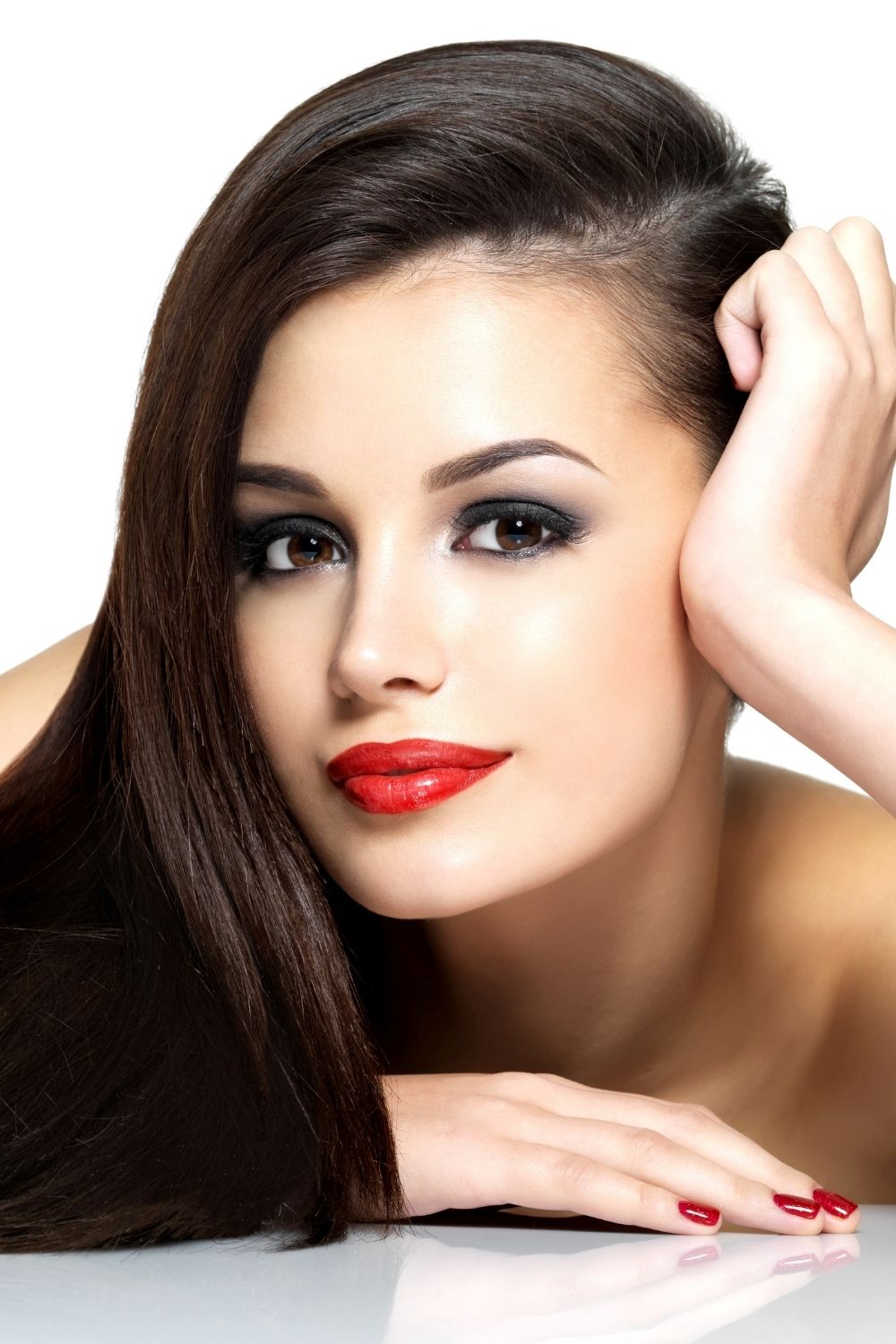Experts explain how to get rid of those stubborn ‘milk spots’ under the skin’s surface
If, when peering close into a magnifying mirror, you’ve noticed a smattering of tiny, milky-white spots lying beneath the surface of your skin, you’re not alone. They’re known as milia, and are purely a cosmetic issue with no health concerns attached. However, there are ways to get rid of them, should you want to.
Here, see everything you need to know about milia, from how and why they form, to the safest ways to say goodbye to yours…
What are milia?
Often mistaken for whiteheads, milia are actually keratin-filled cysts that form just under the skin, looking like white or yellowish bumps on the surface. Nicknamed ‘milk spots’, milia is a condition commonly associated with newborn babies, but occurs in children and adults, too.
Milia causes
“There are several factors that cause milia in adults,” Encheva says. “Most commonly, they occur due to dead skin building up and getting trapped in the pores near the surface of the skin. If the build-up doesn’t get expelled naturally, it can become a small cyst.” This type is called primary milia.
When it comes to the eye area specifically, Dr Tsagaris explains that when skincare doesn’t penetrate properly, primary milia can manifest. “Unlike skin on the rest of the face, the eye area does not contain oil glands that can help keep this skin moist and it has limited blood circulation – therefore eye creams need to be very specialised so they can increase skin volume and firmness as well as being able to be absorbed properly,” he explains.
The other type, secondary milia, looks similar to primary milia but develops very differently. Encheva explains: “Secondary milia happens when something clogs the sweat ducts. This is usually caused by some kind of skin trauma or infection, (such as laser treatments, chemical peels, and herpes), or contributing lifestyle factors, including lack of sleep, smoking, poor personal hygiene, using oil-based beauty products in excess, and long-term steroid use”.
Before considering treatment for milia, it’s worth noting that they may simply disappear on their own, Bolder says. “Depending how deep the milia lay, they can naturally come to the surface of the skin after a few weeks or months”. Both experts feel that if milia doesn’t bother you, it’s best to leave well alone. However there are quick and easy professional treatments should you want to see the back of them.
How to get rid of milia: your treatment options
First up, forget squeezing. “This will only irritate and cause damage to the skin without being able to remove the problem,” Bolder warns. Encheva agrees: “squeezing the bump with your bare hands is a big no-no” – as is taking any tools to the milia. “You don’t want to damage your skin with poor removal techniques,” she adds.
Your best bet is the pro route. “Milia removal with a skincare professional usually requires an incision, especially when the cysts are deep below the skin’s surface,” Encheva explains. “Typically, it’s a quick and painless in-clinic procedure. Depending on the dermatologist or skin expert, they should be able to get rid of the milia using a comedone extractor, lancing tool or needle.”
Bolder explains the latter technique in layman’s language: “With a sterile needle you can gently flick up the outer most surface of skin freeing the milia and enabling you to wiggle it out like a tiny chalk ball.” Sounds horribly satisfying.
How to prevent milia
As ever with skincare, prevention is better than cure (there’s no needles involved, for one), so try these suggestions if milia is a recurring concern for you.
- THOROUGH CLEANSING
“Removing your make-up thoroughly before bed is vital,” Encheva instructs. If you’re not already, try double-cleansing in the evenings, particularly if you wear heavy make-up and/or live in a polluted area. The first cleanse removes your make-up, SPF and sebum (use something like an oil cleanser to melt make-up), and the second – which is where your facial massage comes into play – should remove any further impurities and treat the skin. Try: Pai Light Work Cleansing Oil followed by Oskia Rest Day Cleansing Milk.
- AVOID OILY EYE MAKE-UP REMOVERS
Heed Dr Bunting’s advice and avoid oil-based formulas around the eyes, because “oily or biphasic eye make-up removers can leave an oily residue in the this area,” she explains.
- INCORPORATE EXFOLIATION
Next up, know that regular exfoliation “works wonders in preventing milia,” Encheva says. Look for AHA and BHA acid exfoliators, a “glycolic acid 5 per cent or 10 per cent and a salicylic 2 per cent” specifies Bolder. “Apply three times a week, paying special attention to areas of milia.





